Overclocking
First, we explore the limits again, which already seemed quite broad with the Core i7-8700K. To make sure that we don't run in thermal limits, because Intel still relies on the tiresome thermal paste between Die and IHS, we initially use the chiller again and cool the IHS with a constant 20°C.
Once again, we can easily reach the 5 GHz mark. With 5.2 GHz Windows started and some games were running, but then Cinebench was already finished. Cinebench also ran at 5.1 GHz, but at the most ape at Luxrender it was over. At 5 GHz it then slammed creo 3.0, Solidworks and some of the HPC applications, so that we could only really test everything stable at 4.9 GHz.
In this context, we would like to draw attention once again to the possibilities of manual load-line calibration. Nevertheless, the Core i5-8600K is already quite well in the race with the automatic specification by MSI at 1.29 volts and 4.9 GHz in Prime95 with AVX2. Without overclocking, we were then able to measure an average of 1.22 volts or Read. In gaming, it is sometimes sporadically over the 1.3 volts, if one of the cores has been particularly busy. The Core i5-8400 was quite often significantly lower at less than 1.2 volts.
Once again, we did not let ourselves be dazzled by the 5 GHz mark, which in some situations we were able to exceed for a longer period of time – it is only apparently stable. Tested with functional applications, it crashes at some point. In case of doubt, it is better to take back 100 MHz and put stability in the foreground. That's exactly what we did again and achieved a still usable result at 4.9 GHz.
Let's also look at our chart comparing power consumption and performance. Both curves are surprisingly coincident on top of each other, while at the Core i7-8700K we are at approx. 4.8 GHz have already detected a flatter curve of the performance increase. Without HT, the memory connection is obviously sufficient to scale perfectly, even if (or rather because) the results are of course much lower:
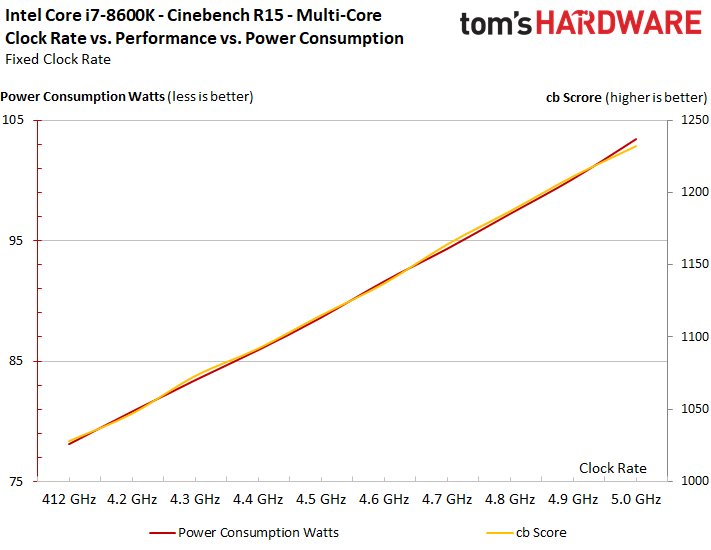
Power consumption
There are no really dramatic differences in the Idle. Nothing dramatic and all the other CPUs are still within the limits of what we were able to measure before. The fact that the Ryzen 7 sometimes absorb significantly more is probably also due to their somewhat too high idle time. Despite the immense measuring period of 30 minutes, the measured differences in the range of one watt and less are still measured as measurement tolerances, whereby the overclocked Core i5-8600K has the sporadic and unavoidable load peaks somewhat have hailed.
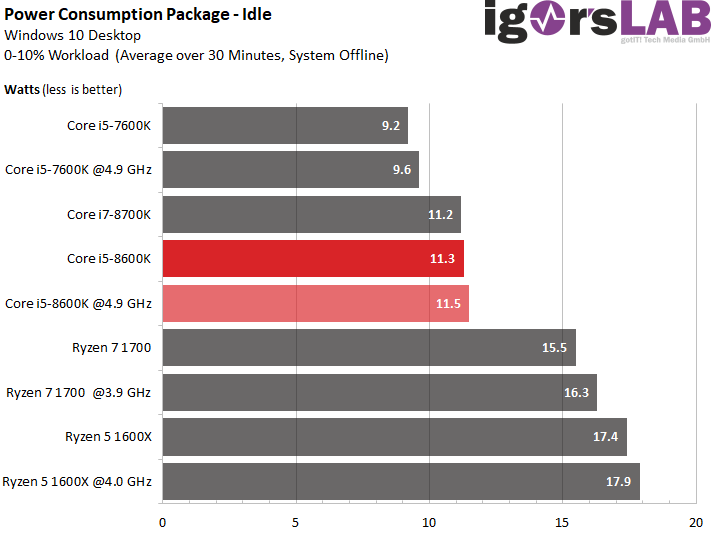
The average value of a typical application with 2D and 3D load components then coincides with the actual measured performance values for the new Intel CPU, because the disproportionate increase in CAD performance during overclocking is largely based on the Elimination of the CPU limit for the fast Quadro P6000.
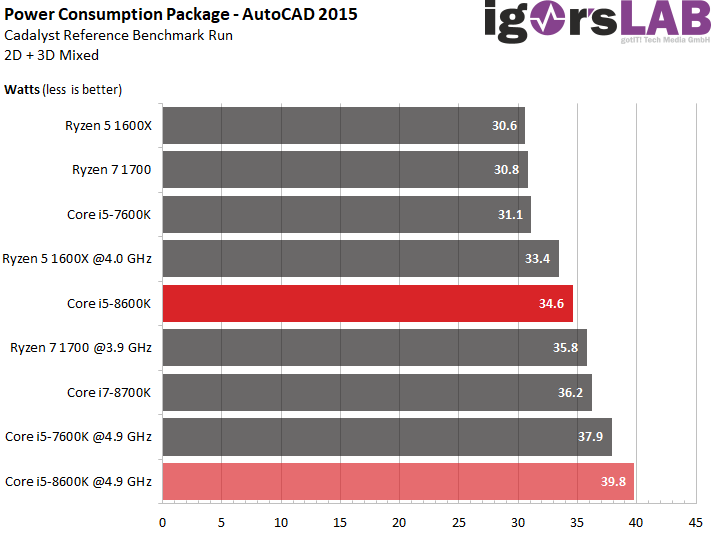
The result of gaming is a somewhat more balanced, but very similar picture:
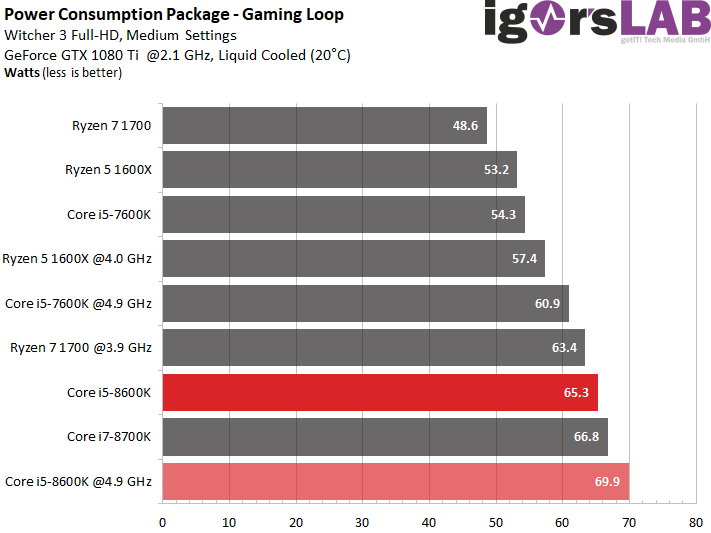
In the stress test with AVX, you have a bit of distance again if you let the K-CPU drive the maximum turbo clock on all cores. Instead of the 78 watts when rendering without and plentiful 103 watts with overclocking to 5 GHz, AVX without offset lets the whole thing soar up to a good 162 watts, whereby the Core i5-8600K did not yet run into the thermal limit even at 5 GHz and the power consumption thus did not has been influenced.
Temperatures
Despite the thermal paste, the smaller Core i5 can still be kept in check up to 4.9 GHz, but it should be a good all-in-one compact water cooling or better a decent custom loop solution. With air you still have a real chance in many games to be added even without Throttling, but then the room temperature should be constantly below 25°C and the housing should be well ventilated.
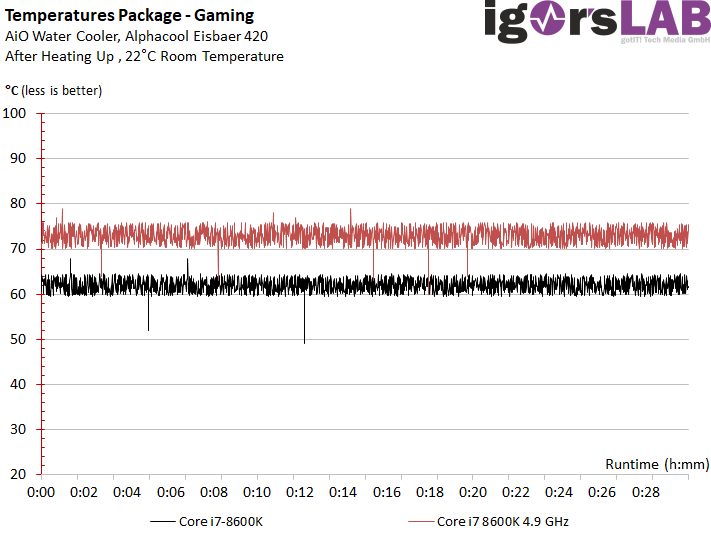
Under full load it will be nicely cool with Chiller for the overclocked CPU. We could have solved everything without any problems with the AiO compact water cooling system, where even with AVX the values at 4.9 GHz did not rise much above 90°C. However, in order to better maintain the comparability to the Core i7-8700K, we have again graphically displayed the Chiller passes.
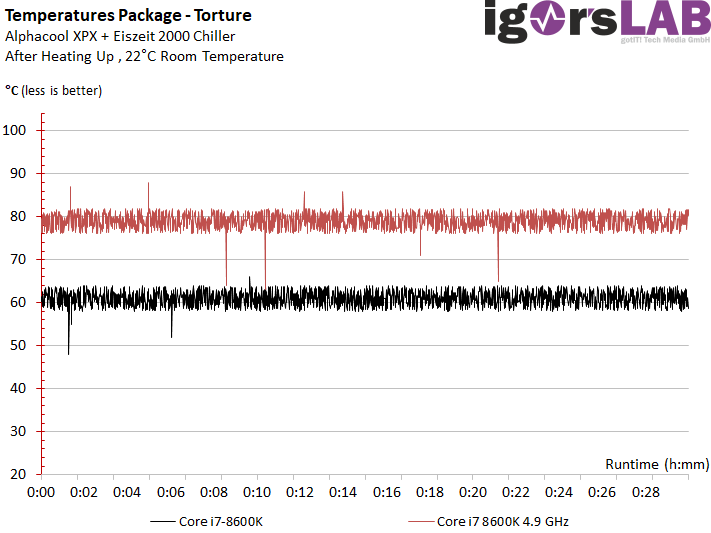
Intermediate conclusion
Heritage: it's amazing what it can swallow a small CPU if you just provoke it properly. Nevertheless, the Core i7-8600K is relatively easy to cool, even with air. This works really well with the Core i5-8600K even when overclocked, if you only use a sufficiently potent cooling system.
- 1 - Einführung und Test-Setup
- 2 - 3DMark, VRMark, Civilization AI Test
- 3 - Ashes of the Singularity: Escalation
- 4 - Battlefield 1
- 5 - Civilization VI
- 6 - Warhammer 40K: Dawn of War III
- 7 - Project Cars
- 8 - Far Cry Primals
- 9 - Hitman (2016)
- 10 - Grand Theft Auto (GTA) V
- 11 - DTP, Office, Multimedia und Kompression
- 12 - Workstation 2D- und 3D-Performance
- 13 - CPU-Computing und Rendering
- 14 - Wissenschaftlich-technische Berechnungen und HPC
- 15 - Übertaktung, Leistungsaufnahme, Temperaturen
- 16 - Zusammenfassung und Fazit















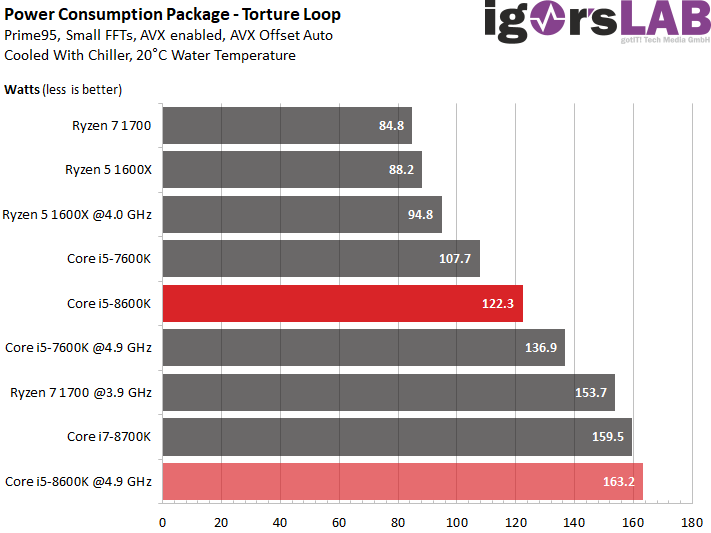

















Kommentieren